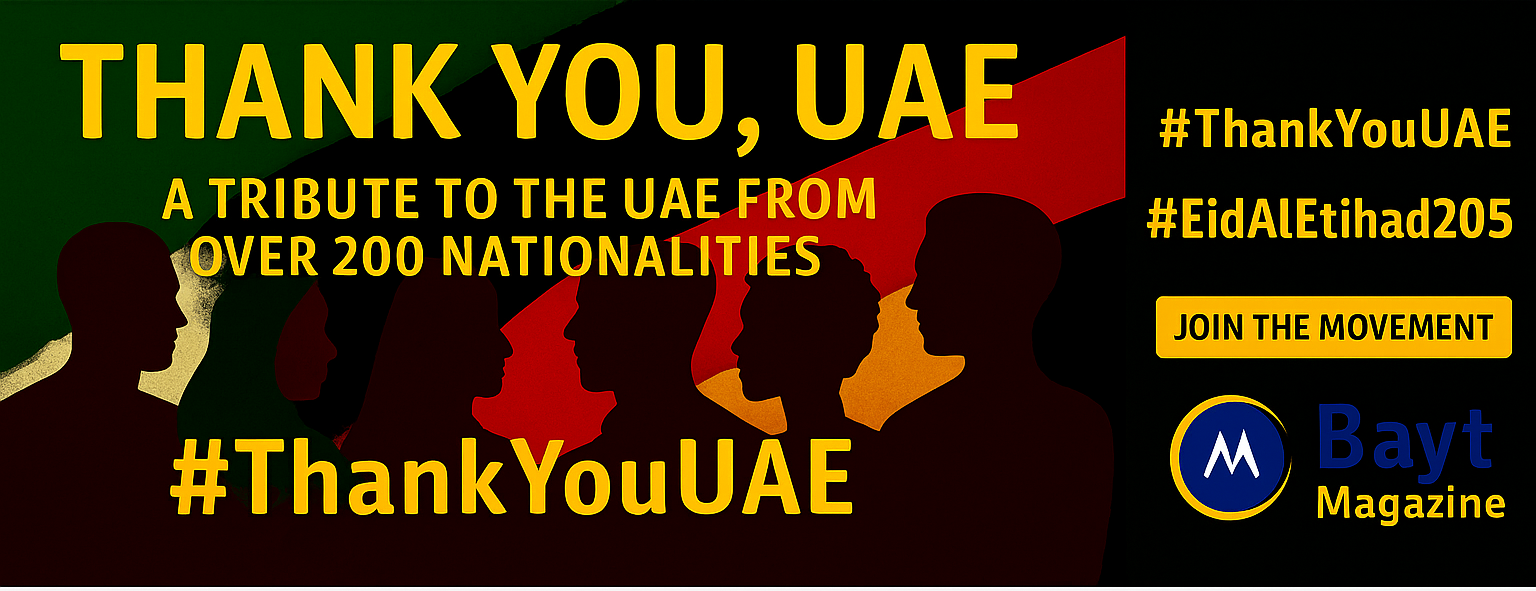Caste discrimination hurts millions of people around the world. A staggering 67% of Dalits in the US face harassment at work just because of their caste identity. The practice remains strong both in India and diaspora communities, even though Indian law bans it. Human Rights Watch data shows that the savarna system excludes more than 30% of Indians, which shows how this rigid social hierarchy disrupts society.
The damage from caste discrimination runs deep in India. More than nine Dalit women and minor girls become victims of rape each day, and only 2% of these cases lead to conviction, according to the International Dalit Solidarity Network. The justice system fails to protect Dalits properly. About 1.3 million Dalits still work as manual scavengers despite laws against it. The problem has spread beyond India’s borders. The Cisco Systems lawsuit in California and the Tirkey v. Chandhok case in the UK prove this point. The UK case resulted in a £180,000 award to compensate for discrimination.
We have a long way to go, but we can build on this progress. Seattle made history in February 2023 by adding caste as a protected class in its anti-discrimination laws. The story took a different turn in California when Governor Gavin Newsom vetoed similar protections in September 2023. This piece looks at why caste needs explicit protection in anti-discrimination laws. It analyzes current legal frameworks’ shortcomings and suggests ways to create meaningful change.
Understanding Caste as a Distinct Social Hierarchy
Image Source: Shutterstock
“Caste-based discrimination is not only unjust but also prevents the progress and development of society as a whole.” — B. R. Ambedkar, Principal architect of the Indian Constitution; social reformer
The caste system in India ranks among the world’s oldest and most intricate social hierarchies, with roots stretching back over 2,000 years. This system differs from other hierarchical structures because it passes down through generations and controls every aspect of life – from jobs and marriages to daily social interactions.
Caste vs. Race and Ethnicity: Conceptual Differences
The difference between caste and race helps us understand why caste needs its own legal protection. Race depends on physical traits and can vary in significance between societies, while caste exceeds cultural and national boundaries. A person’s caste remains fixed from birth, whatever their location or social circumstances.
Race and caste show several key differences:
- Race changes with context – a minority group in one society might hold power elsewhere, while lower castes stay subordinate in all situations
- Society can address racial tensions through change, but caste identity stays permanent and unchangeable
- Skin color doesn’t determine caste, though it sometimes overlaps with caste discrimination
Studies show that race and caste work as separate systems that occasionally intersect. Isabel Wilkerson explains that “race is the arbitrary manner of differentiating one group from another based on skin color,” while caste shows “how we use that distinction to maintain division among groups and ascribe the appropriate lifestyles”.
Caste Discrimination in India: Historical and Legal Context
Traditional Hindu society divides people into four main varnas: Brahmins (priests/teachers), Kshatriyas (rulers/soldiers), Vaishyas (merchants/traders), and Shudras (laborers/artisans). Dalits, known as “untouchables,” exist outside this structure. Ancient texts like the Manusmriti “acknowledges and justifies the caste system as the basis of order and regularity of society”.
The constitution abolished untouchability in 1950, yet it persists throughout India. Dalits make up more than one-sixth of India’s population—roughly 160 million people—and face severe social rejection. People exclude them from public spaces, deny them access to water facilities, and segregate them in schools.
Indian law protects citizens from caste discrimination through four major pieces of legislation: the Constitution, the Protection of Civil Rights Act (1955), the Scheduled Castes and Scheduled Tribes Prevention of Atrocities Act (1989), and the Prohibition of Employment as Manual Scavengers Act (2013). Law enforcement struggles with these cases, and conviction rates remain low.
Caste Discrimination Examples in the Indian Diaspora
Caste discrimination follows South Asian communities worldwide, despite beliefs that these divisions fade after migration. A 2016 study called “Caste in the USA” revealed widespread caste bias in workplaces, schools, religious institutions, and relationships.
The UK saw its first caste discrimination case reach an employment tribunal in 2011. Vijay Begraj reported workplace harassment due to his inter-caste marriage. A “higher caste” colleague told him that in India, his caste would have limited him to cleaning jobs instead of working at a law firm.
Tech companies in the United States have become centers of caste discrimination. California’s lawsuit against Cisco Systems in 2020 marked a significant milestone. Several American universities, including Harvard, Colby College, and Brandeis University, now recognize caste as a protected category in their non-discrimination policies.
Legal Frameworks Addressing Caste-Based Discrimination
Image Source: Futuress
Legal responses to caste discrimination have evolved differently in jurisdictions of all sizes. Each framework reflects unique historical and social contexts. These systems don’t deal very well with the complex challenges of caste-based discrimination.
Punishment for Caste Discrimination in India: SC/ST Act and Beyond
The Scheduled Castes and Scheduled Tribes (Prevention of Atrocities) Act of 1989 serves as India’s main legislation against caste discrimination. This detailed law makes specific offenses against Dalits and tribal communities criminal offenses. Punishments range from six months to five years imprisonment for most violations. Serious offenses can lead to life imprisonment. The Act makes these acts criminal:
- Forcing SC/ST members to eat inedible substances or dumping waste in their premises
- Forcing manual scavenging or removal of human/animal carcasses
- Preventing access to public resources or educational institutions
- Sexual offenses targeting SC/ST women
The Act became stronger through amendments in 2015 and subsequent years. Implementation remains a challenge, and many cases fail to secure convictions despite the legal framework.
International Human Rights Law on Descent-Based Discrimination
International human rights frameworks now recognize caste discrimination as a violation of fundamental rights. The UN Committee on the Elimination of Racial Discrimination (CERD) confirmed in 2002 that “descent” in Article 1 of the International Convention on the Elimination of All Forms of Racial Discrimination includes caste-based discrimination.
The UN Secretary-General supported guidance that specifically addresses descent-based discrimination. People targeted by caste discrimination are “in a particularly marginalized position and need focused attention”. UN estimates show at least 250 million people face discrimination based on caste and similar systems of inherited status. International bodies now regularly monitor how states comply with obligations to eliminate caste discrimination within racial discrimination frameworks.
Equality Act 2010 and the UK’s Legal Ambiguity on Caste
The UK’s legal framework shows significant ambiguity about caste discrimination. The Equality Act 2010 originally had a provision that allowed secondary legislation to make caste an aspect of race, which would prohibit caste discrimination. A 2013 amendment made implementing this provision mandatory.
The UK government changed its position several times. The Employment Appeal Tribunal’s decision in Chandhok & Anor v. Tirkey (2014) suggested that existing race discrimination provisions might already make caste discrimination unlawful. This led the government to rely on case law development instead of explicit legislation.
A government study found evidence of caste discrimination in Britain’s workplaces, schools, and service provision. The study concluded that “Equality Act 2010 provisions on religious discrimination cannot cover caste discrimination and harassment as effectively as caste-specific provisions would”. The government announced plans to repeal the duty to legislate against caste discrimination in July 2018. They preferred to let case law evolve naturally.
Proxies and Their Limitations in Legal Practice
Image Source: FasterCapital
Legal systems without clear caste protections force courts and supporters to use existing categories as substitutes. This makeshift approach resembles fitting a square peg into a round hole and doesn’t deal very well with caste-based discrimination’s unique nature.
Use of ‘Ethnic Origin’ in Tirkey v. Chandhok
The groundbreaking UK case Tirkey v. Chandhok shows how courts have adapted existing protected categories to handle caste discrimination. Ms. Tirkey, an Adivasi domestic worker (seen as part of the “servant caste”), claimed mistreatment due to her lower status. The Employment Appeal Tribunal ruled that caste wasn’t directly covered under section 9(1) of the Equality Act. However, it could fit within ethnic origins’ broad scope, which has characteristics determined by “descent.” The tribunal found that discrimination against “a low caste Indian national” was unlawful. Ms. Tirkey ended up receiving substantial compensation. Yes, it is now clear that some caste discrimination claims can proceed under existing law, even without specific caste provisions.
Caste as a Subset of Religion or Ancestry in US Law
US supporters say Title VII’s protections against discrimination based on race, religion, and national origin already include caste discrimination. California’s lawsuit against Cisco Systems claimed discrimination against a Dalit engineer was an “unlawful employment practice based on religion, ancestry, national origin/ethnicity, and race/color.” Some legal experts believe caste discrimination represents religious heritage discrimination since caste identity comes from Hindu society’s structure. Others say it’s ancestry discrimination because caste status passes down through generations and cannot be changed.
Operational Challenges in Using Proxies for Caste
Using substitutes creates real problems. Claims face easier challenges without explicit caste protections, which can lead to dismissals. These substitutes also fail to capture caste’s complex nature. Determining someone’s caste often involves troubling practices. Dalits found that their fellow Indian Americans would try to learn their caste by asking about their region, religious rituals, wedding customs, food preferences, and festivals. The system risks making caste permanent through well-meaning but potentially harmful classification efforts.
Case Studies: Legal Recognition Efforts in the US and UK
Image Source: KNKX
“With over 167,000 people from South Asia living in Washington, largely concentrated in the Greater Seattle area, the region must address caste discrimination, and not allow it to remain invisible and unaddressed.” — Kshama Sawant, Seattle City Councilmember; socialist activist
Legal battles have become testing grounds to protect against caste discrimination in Western jurisdictions. These cases show both progress and ongoing challenges to recognize caste as a protected category.
Cisco Case and the California Civil Rights Department
The California Civil Rights Department filed a groundbreaking lawsuit against Cisco Systems in June 2020. The case claimed two high-caste Indian managers discriminated against a Dalit engineer who got lower pay and fewer opportunities. Cisco argued that the engineer did not belong to a protected class. The department dropped its case against individual managers in early 2023, but the fight against Cisco continues.
This case changed everything. Over 250 tech workers at companies like Google, Facebook, and Apple came forward to report similar experiences through Equality Labs’ hotline. The case also gave “many Dalits the courage to come forward with their stories about caste discrimination in education, the medical and tech industries”.
Seattle’s Ordinance on Caste Discrimination
Seattle wrote its name in history books as the first U.S. city to ban caste discrimination explicitly in February 2023. The city council’s 6-1 vote added caste to Seattle’s anti-discrimination laws that protect against discrimination in employment, housing, and public spaces. The council chambers filled with cheers of “Jai Bhim,” a battle cry of Dalit rights supporters.
The ordinance sparked mixed reactions. Councilmember Kshama Sawant, the legislation’s sponsor, said caste discrimination “crosses national and religious boundaries”. However, groups like the Coalition of Hindus of North America worried the law would “single out Hindus” and might “dissuade employers from hiring South Asians”.
Public Consultation Outcomes in the UK
The UK government ran a thorough public consultation about caste discrimination from March to September 2017. They received more than 16,000 responses. About 8,513 people wanted to rely on case law instead of explicit legislation. The government decided against specific caste legislation in July 2018.
The government believed case law, as shown in Tirkey v. Chandhok’s case, could offer flexible protection that “allows the concept of caste to be developed and refined over time”. This decision left advocacy groups like CasteWatch UK unhappy. Their representatives believed explicit protection was needed.
Doctrinal and Strategic Implications for Legal Reform
Legal scholars now call for explicit recognition of caste in anti-discrimination frameworks. Current protected categories don’t deal very well with the unique challenges of caste-based oppression.
Why Caste Requires Sui Generis Legal Recognition
Caste needs specific legal recognition because it works as a distinct social hierarchy with unique characteristics. The Ontario Human Rights Commission recognizes caste-based discrimination as “an internationally recognized violation of human rights”. Caste discrimination disrupts people’s lives beyond Hindu communities. It extends to Muslim, Christian, Sikh, and Jain groups, which makes religion alone an insufficient proxy. Recognition of caste as a sui generis (of its own kind) category would provide better guidance to prevent such discrimination in all contexts.
Risks of Overgeneralization in Anti-Discrimination Law
Current approaches raise concerns about conceptual imprecision. A legal scholar points out, “The implications of being legally unable to generate a definition of caste to accompany any inclusion of ‘caste’ into the race provisions of the Act are most important”. Anti-discrimination protections without precise definitions might be too narrow or too broad. This could lead to collateral damage and reduce the protection’s effectiveness.
Strategic Litigation and Policy Advocacy Approaches
Strategic litigation has become a powerful tool that advances caste equity beyond seeking favorable judgments:
- Declaratory relief: Cases provide validation through “sophisticated, law-based argument” that some describe as “justice in their own terms”, even when unsuccessful
- Community empowerment: Legal challenges help “challenge power imbalance” whatever the case outcomes
- Institutional awareness: Litigation alerts organizations that “they will be held to account”
Policy advocacy has achieved notable wins beyond the courtroom. Organizations like Equality Labs have secured caste protections at various institutional levels. Their successes include the Alphabet workers’ union, California Democratic Party, and more than 30 universities that affect over 500,000 students. These results show that an all-encompassing approach combining litigation with policy advocacy offers the best path toward meaningful legal reform.
The Path Forward: Recognizing Caste in Anti-Discrimination Frameworks
Caste discrimination is a unique form of oppression that goes beyond borders, cultures, and religions. Millions worldwide face its impact, yet legal frameworks don’t deal very well with this ancient hierarchical system. This piece shows how caste operates as a distinct social hierarchy, quite different from race, ethnicity, or religion—though it sometimes overlaps with these categories.
Legal approaches today show clear limitations. Using proxies like “ethnic origin” or “ancestry” doesn’t capture how complex and specific caste-based discrimination really is. The UK’s back-and-forth regarding the Equality Act creates uncertainty for victims who seek justice. Legal systems should acknowledge that caste discrimination needs clear recognition rather than trying to fit this unique oppression into existing categories.
We have a long way to go, but we can build on this progress. Seattle’s groundbreaking ordinance that explicitly bans caste discrimination marks a vital milestone. The ongoing Cisco case has brought unprecedented attention to workplace caste discrimination in tech industries. These developments show that policymakers and legal professionals increasingly understand caste’s distinct nature.
Anti-discrimination law must include explicit caste protections for several compelling reasons. Caste discrimination affects hundreds of millions globally, making it a human rights issue of massive scale. Its hereditary and unchangeable nature creates vulnerabilities that existing protected categories can’t address properly. Clear recognition would help courts, employers, and institutions eliminate the ambiguity that holds back enforcement.
Test cases and policy advocacy will play vital roles as we move forward. Advocates can establish legal precedents through carefully selected cases that recognize caste as a distinct protected category. Community-based advocacy has already secured institutional protections at universities and within certain organizations.
Legal systems worldwide face a choice: recognize caste discrimination’s unique characteristics or force victims to use inadequate frameworks. Justice needs explicit, clear protection against discrimination based on an accident of birth that still determines social standing, economic chances, and simple dignity for millions worldwide.





